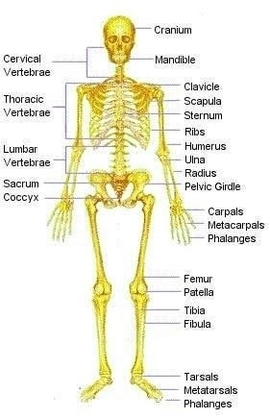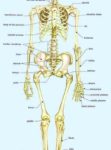The Human Body Skeleton
The human body skeleton, also known as the skeletal system, is the internal framework that provides structure, support, and protection to the body. It consists of approximately 206 bones in adulthood, making up about 14% of the total body weight. The skeleton can be divided into two main parts: the axial skeleton and the appendicular skeleton.
Axial Skeleton
The axial skeleton, comprising around 80 bones, forms the central core of the human body. It includes the vertebral column (spine), much of the skull, and the rib cage. The axial skeleton supports the head, trunk, and upper extremities, transmitting their weight to the lower extremities at the hip joints. The bones of the spine are supported by many ligaments, and the erector spinae muscles aid in maintaining balance.
Appendicular Skeleton
The appendicular skeleton, consisting of approximately 126 bones, includes the shoulder girdle, the pelvic girdle, and the bones of the upper and lower limbs. This part of the skeleton enables locomotion and protects the major organs of digestion, excretion, and reproduction.
Functions of the Skeleton
The human skeleton performs six major functions:
1. Support: The skeleton provides the framework that supports the body and maintains its shape.
2. Movement: The joints between bones allow movement, with some joints allowing a wider range of movement than others.
3. Protection: The skeleton protects our vital organs. For instance, the cranium protects the brain, and the rib cage safeguards the lungs and heart.
4. Production of Blood Cells: The skeleton is responsible for the production of blood cells.
5. Storage of Minerals: The skeleton stores essential minerals.
6. Endocrine Regulation: The skeleton plays a role in endocrine regulation.
Unique Features
The human skeleton is not as sexually dimorphic as that of many other primate species, but subtle differences between sexes in the morphology of the skull, dentition, long bones, and pelvis exist. In general, female skeletal elements tend to be smaller and less robust than corresponding male elements within a given population. The human female pelvis is also different from that of males to facilitate childbirth.
In conclusion, the human body skeleton is a remarkable structure that not only gives the body its shape but also performs crucial functions that enable us to live and move. Understanding the skeletal system is fundamental to understanding human anatomy and physiology..


